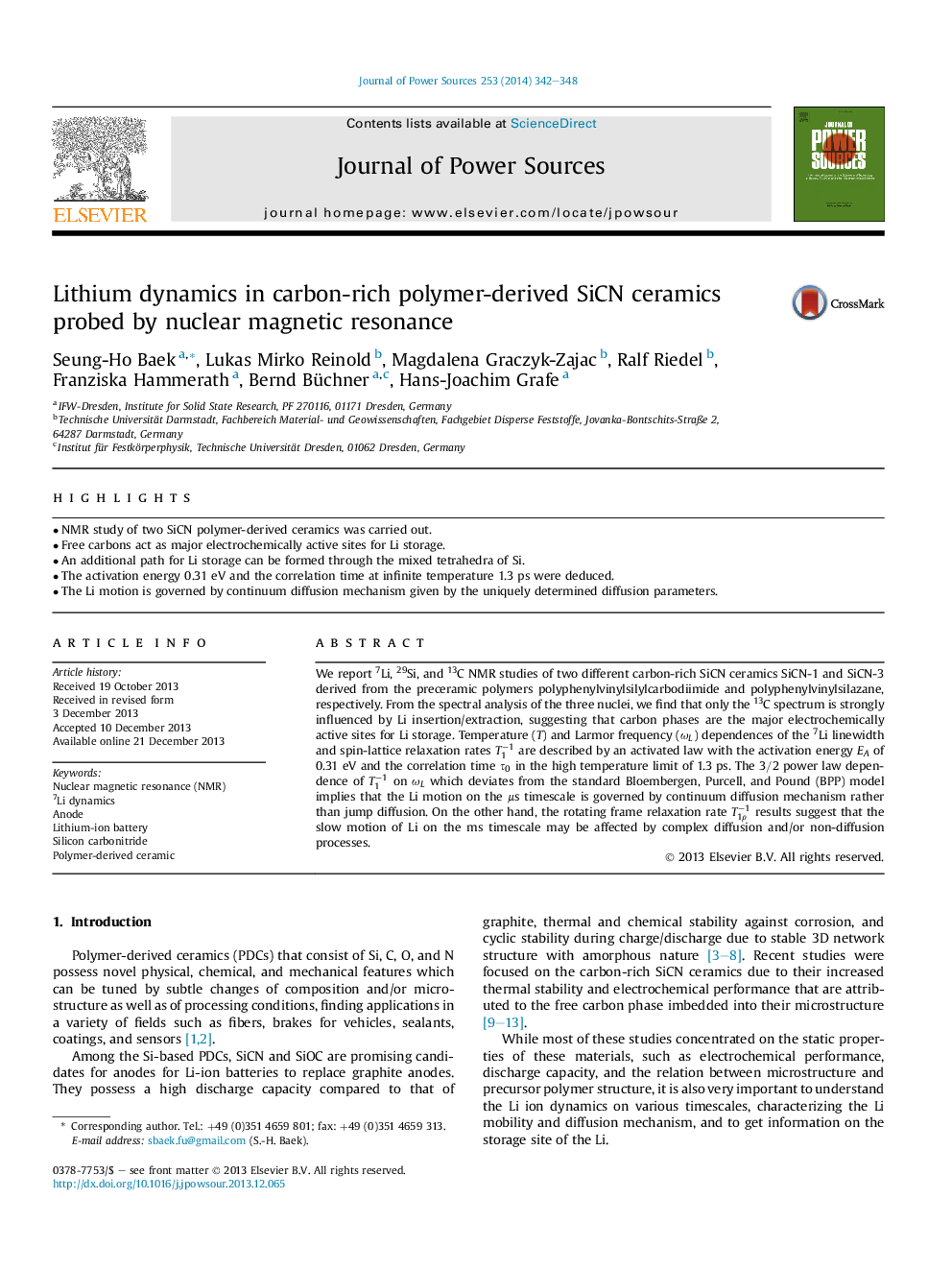| Article ID | Journal | Published Year | Pages | File Type |
|---|---|---|---|---|
| 1287097 | Journal of Power Sources | 2014 | 7 Pages |
•NMR study of two SiCN polymer-derived ceramics was carried out.•Free carbons act as major electrochemically active sites for Li storage.•An additional path for Li storage can be formed through the mixed tetrahedra of Si.•The activation energy 0.31 eV and the correlation time at infinite temperature 1.3 ps were deduced.•The Li motion is governed by continuum diffusion mechanism given by the uniquely determined diffusion parameters.
We report 7Li, 29Si, and 13C NMR studies of two different carbon-rich SiCN ceramics SiCN-1 and SiCN-3 derived from the preceramic polymers polyphenylvinylsilylcarbodiimide and polyphenylvinylsilazane, respectively. From the spectral analysis of the three nuclei, we find that only the 13C spectrum is strongly influenced by Li insertion/extraction, suggesting that carbon phases are the major electrochemically active sites for Li storage. Temperature (T ) and Larmor frequency (ωLωL) dependences of the 7Li linewidth and spin-lattice relaxation rates T1−1 are described by an activated law with the activation energy EAEA of 0.31 eV and the correlation time τ0τ0 in the high temperature limit of 1.3 ps. The 3/23/2 power law dependence of T1−1 on ωLωL which deviates from the standard Bloembergen, Purcell, and Pound (BPP) model implies that the Li motion on the μ s timescale is governed by continuum diffusion mechanism rather than jump diffusion. On the other hand, the rotating frame relaxation rate T1ρ−1 results suggest that the slow motion of Li on the ms timescale may be affected by complex diffusion and/or non-diffusion processes.
